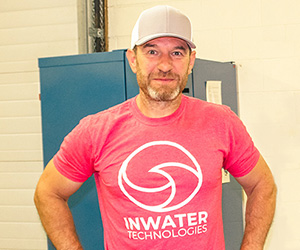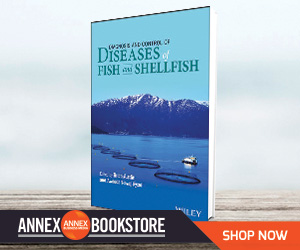| |
| |
 |
 |
| |
 |
|
@{mv_date_MMM d, yyyy}@ |
|
| |
 Automated fish feeders are now standard in most fish farms but, someday, in a not-so-distant future, you will be able to “install” and test run an advanced automated fish feeder in your farm without bringing the actual equipment in your facility.
» Read more
Automated fish feeders are now standard in most fish farms but, someday, in a not-so-distant future, you will be able to “install” and test run an advanced automated fish feeder in your farm without bringing the actual equipment in your facility.
» Read more
What do non-browning mushrooms, wheat plants with larger grains, and lawn grasses that need less-frequent mowing have in common? Answer: they have all been successfully altered using a new gene-editing technique called CRISPR/Cas9.
» Read more
|
| |
|
| |

In aquaculture facilities, centralized water quality monitoring systems have many benefits. However, there are also drawbacks to having everything controlled at one location; namely, it is a major vulnerability if the system fails. Long-time field service engineer, Kurt Lang, has seen a range of these types of system failures and they often lead to catastrophic losses. This is the primary reason InWater Technologies has adopted the Point4 Remote Interface Unit (RIU) which stores the critical set-points locally so that in the event of a system failure, the water quality in each tank continues to be maintained. Multiple RIUs can also be easily incorporated into a larger InWater monitoring system or the facility’s SCADA system.
>> Contact the experts at InWater to learn more |
| |
|
| |
 Shellfish farmers like to joke about the slow pace of change in their industry. But dig deeper, and both veterans and newcomers express excitement about advances in farming technologies that range from lighter-weight gear to artificial intelligence.
» Read more
Shellfish farmers like to joke about the slow pace of change in their industry. But dig deeper, and both veterans and newcomers express excitement about advances in farming technologies that range from lighter-weight gear to artificial intelligence.
» Read more |
| |
 Jeremy Robbins, vice president of the Catfish Institute, will be glad to say goodbye to 2020 and sit down to a plate of fried catfish. As more people are discovering catfish, Robbins has made it his mission to make sure everyone in America has the chance to taste U.S. farm-raised catfish.
» Read more
Jeremy Robbins, vice president of the Catfish Institute, will be glad to say goodbye to 2020 and sit down to a plate of fried catfish. As more people are discovering catfish, Robbins has made it his mission to make sure everyone in America has the chance to taste U.S. farm-raised catfish.
» Read more |
| |
 |
| |
|
| |

Diagnosis and Control of Diseases of Fish and Shellfish focuses on the diagnosis and control of diseases of fish and shellfish, notably those affecting aquaculture. Divided into 12 chapters, the book discusses the range of bacterial, viral and parasitic pathogens, their trends, emerging problems, and the relative significance to aquaculture. Developments in diagnostics and disease management, including the widespread use of serological and molecular methods, are presented. Application/dose and mode of action of prebiotics, probiotics and medicinal plant products used to control disease are examined, as well as the management and hygiene precautions that can be taken to prevent/control the spread of disease.
>> Learn More |
| |
|
| |

|
| |
 |
 |
| |
|
| |

|
| |
| |












